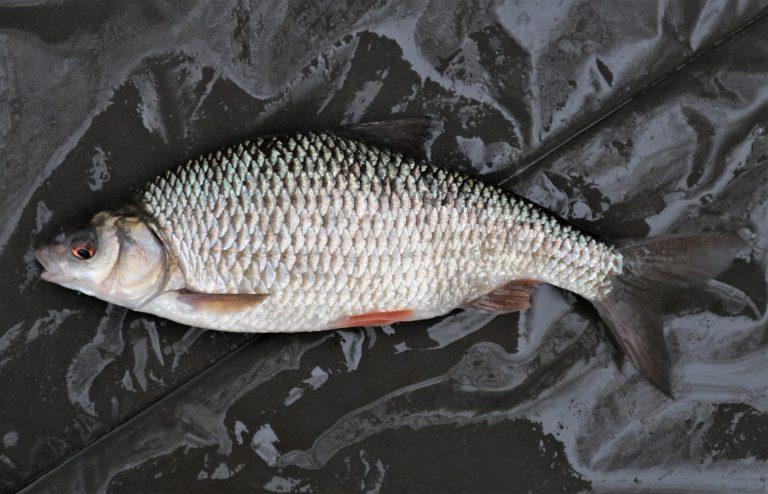TOUGH CUT
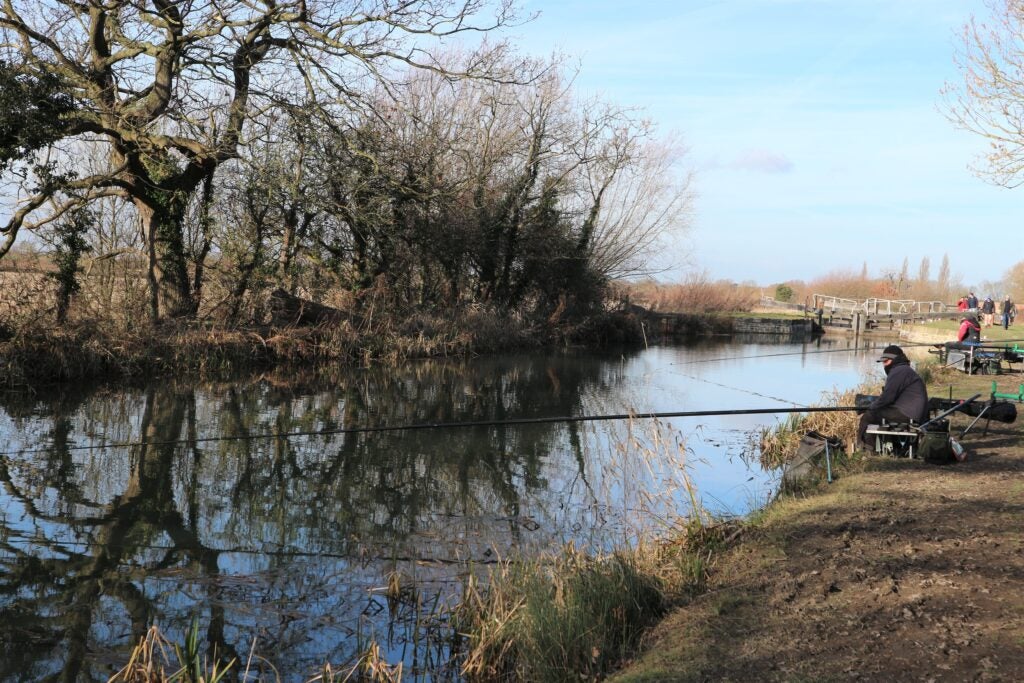
After the first tricky match on the Grantham Canal back in January, I wasn’t expecting anything different early February. It was cold with a stiff breeze blowing through the trees opposite. At least none of us got our cars bogged down this time, parking up on the access track to the lock and walking down onto the Half Mile stretch. The match was split into two sections, attempting to put everyone on a few fish. I couldn’t see anything wanting to be tight against the reeds on the far bank in the shallow water, so for my long feed line I concentrated just down the shelf, where it was a bit deeper. Plumbing around closer in with an even lighter rig revealed a weed-free area, just short of the middle. I fed that with powdery dark groundbait and a few red pinkies, cupping in chop and casters over towards the far side. It was a dismal five hours. I scratched out 20 sprats close in and caught zero across, narrowly winning the section with 11ozs!
STORMY WEATHER
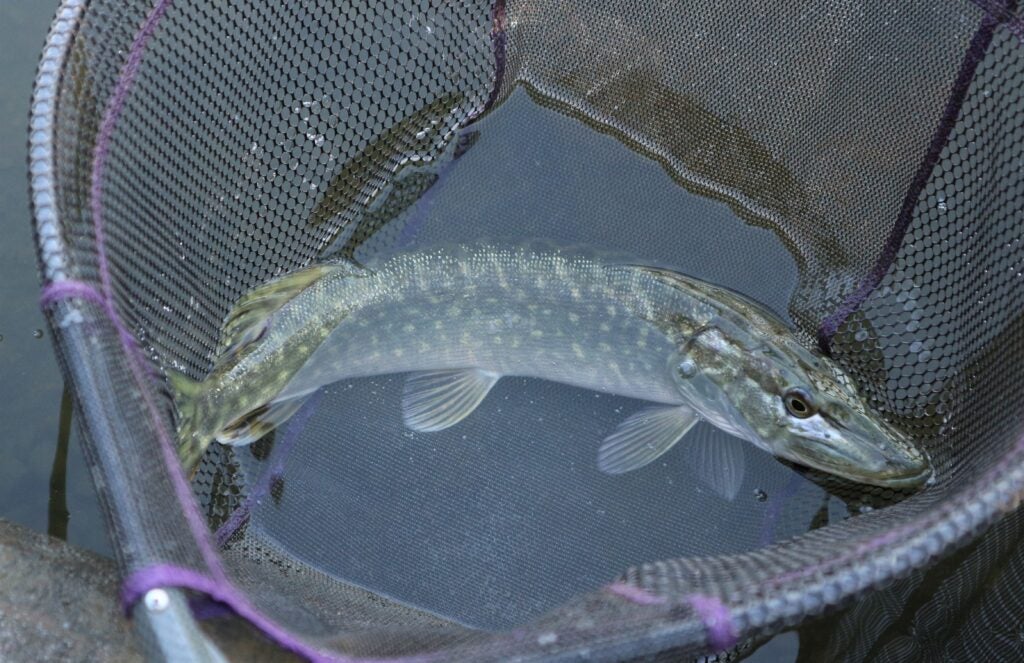
Storm after storm swept across the UK for much of the month and it was very cold sitting out in the icy winds. Quite a few of my outings concentrated on the big Specimen Lake at Woodland Waters, where there are some reasonably sheltered areas when the prevailing westerlies are blowing. I found a lot of fish had moved into the long bay down near the Match Lake and spent several sessions in that area. I quickly discovered helicopter rigs and small maggot feeders could still catch plenty, while groundbait feeder tactics were pulling lots of skimmers. I was hoping to find the big roach that often show at this time of the year, special fish over the 1.5lb mark, with chances of a two pounder. The usual pattern emerged where it took a good hour to get bites, but once they came I enjoyed some busy sessions. The only problem was getting through the smaller roach and hybrids, plus bigger skimmers up to 2lbs. Pike were very active too.
SWITCHING TACTICS
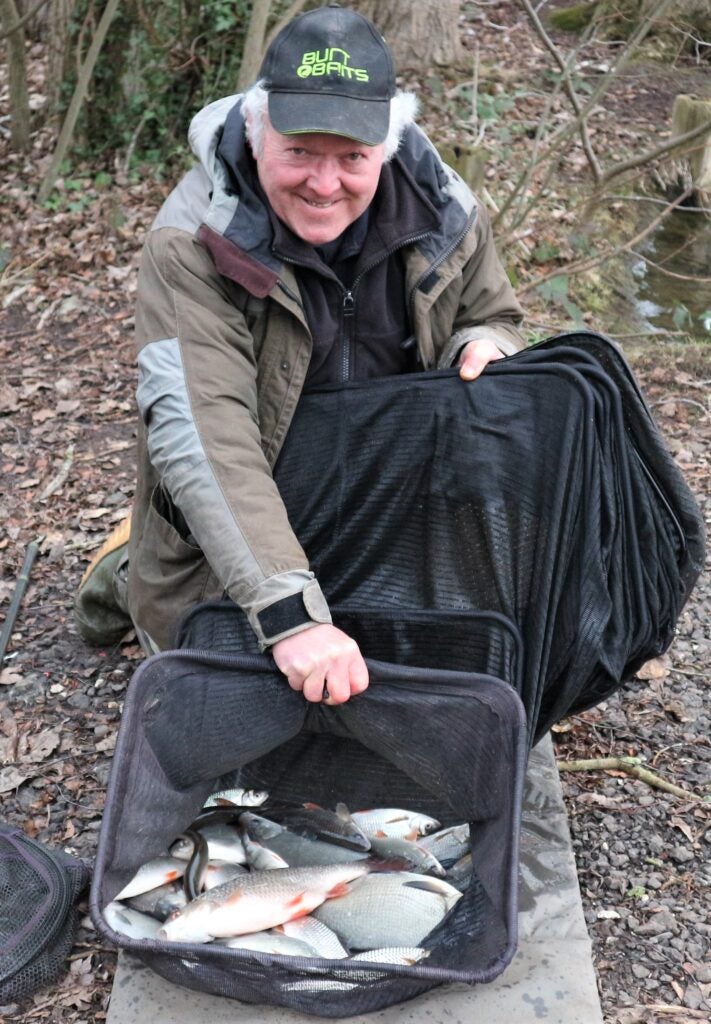
I’ve caught most of my big winter roach from this venue alternating between a groundbait feeder and the long pole. The latter normally comes to life late afternoon. I know when to change to it because I use an active groundbait well laced with tinned hemp. When fish move over this, they disturb the oily nature of the feed and it sends fizzes of tiny bubbles to the surface, creating a mini oil slick. Only trouble with both methods this year has been the explosion of skimmer bream. They are great fish to catch but are tending to push the roach out when using groundbait close in, or far out. Skimmers still butt in on maggot feeder tactics, but not as much, so the helicopter method has been finding a lot more roach and big hybrids. It’s generally been a case of working through the small stuff and enjoying the odd big fish turning up. As is often the case with roach, cold bright days have been hard, overcast and windy ones have been good.
ON TARGET
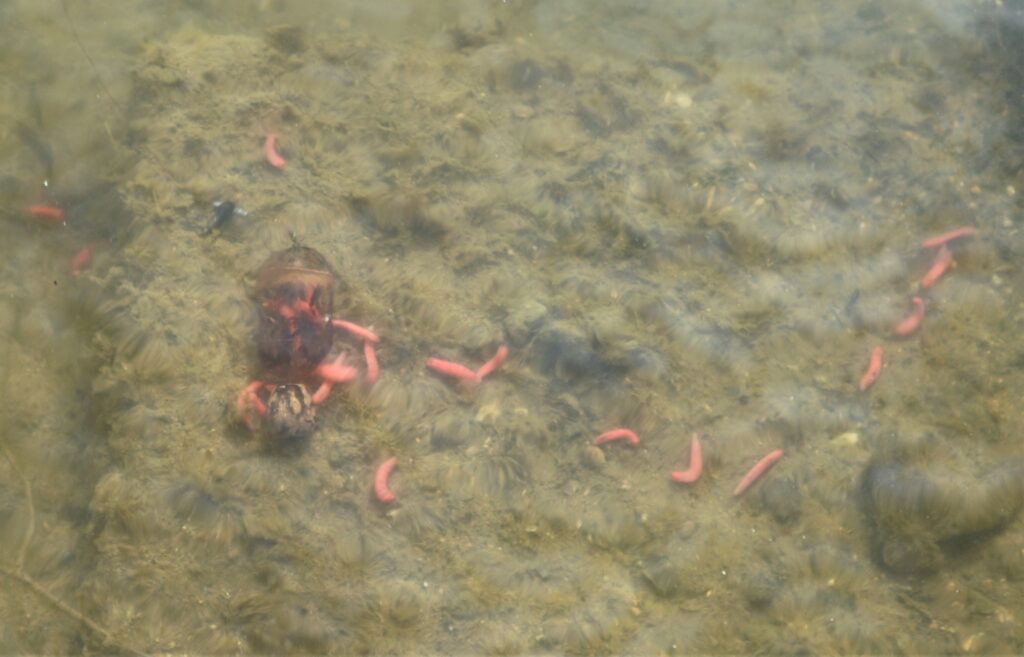
I’ve recently found small Drennan Carp Maggot Feeders excellent for helicopter rigs, casting extremely accurately and releasing their loads quickly. I’ve also discovered each feeder loading doesn’t release as I imagined, because most days there’s quite an undertow on the big lakes I regularly fish. Experimentally dropping a loaded feeder into the clear margins, saw the bait coming out fast, but also being swept by the current into a long trail – in the direction of the water movement. This put my slightly longer hook length perfectly amongst the released red maggots, whereas the tradition way of having a mini-trace set well above the feeder would put hooked grubs well out of the way. Also notice that by using a black waterproof felt tip pen on my feeder, how it blends in better with the bottom terrain. I was surprised how even tiny Stotz weights, locking the bead swivel on my 5inch hook length, stood out.
PERFECT PLACING
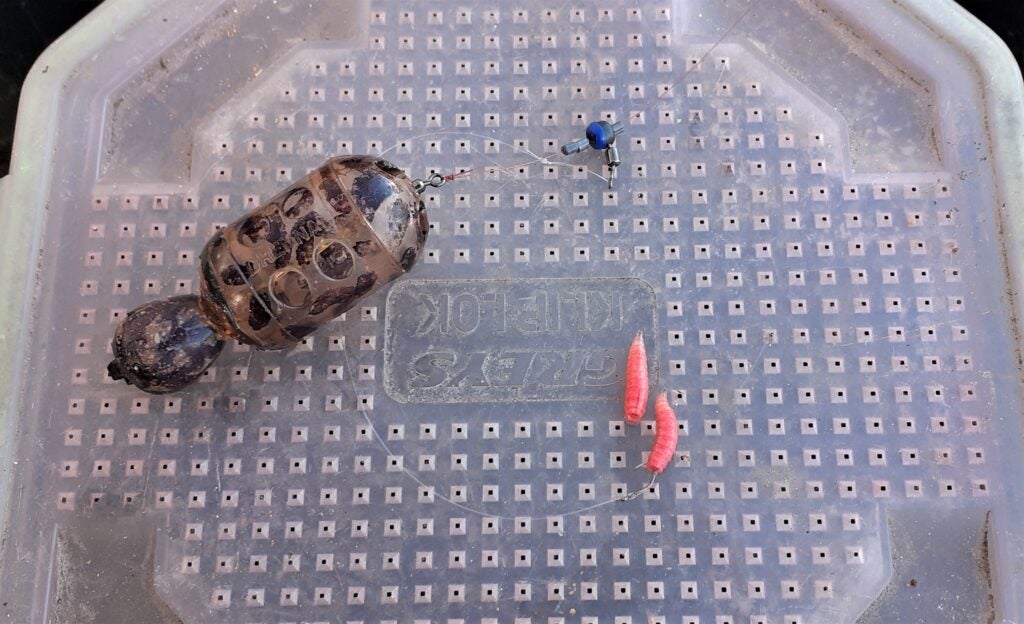
To confirm my hook bait was ending up in the right place, I cast out with one maggot on this occasion and wound back with another one caught in the bend of the hook. Incidentally, these Drennan blockends have now been altered, with later versions having smaller interchangeable lead weights installed. I have found weight forward designs like this don’t cause line spin as much as side lead models. This is important because it stops that annoying occurrence of the main line wrapping back around the quivertip when baiting up. At the end of sessions I unclip the main line and cast the rig a bit further. I then wind back with the mono running through the forefinger and thumb of my right hand, which is supporting the rod in front of the reel. If you do this a few times and hold the feeder just above the water after it has been retrieved, it spins for ages. After a couple of chucks this stops because a lot of twist has been removed.
WANTING MORE
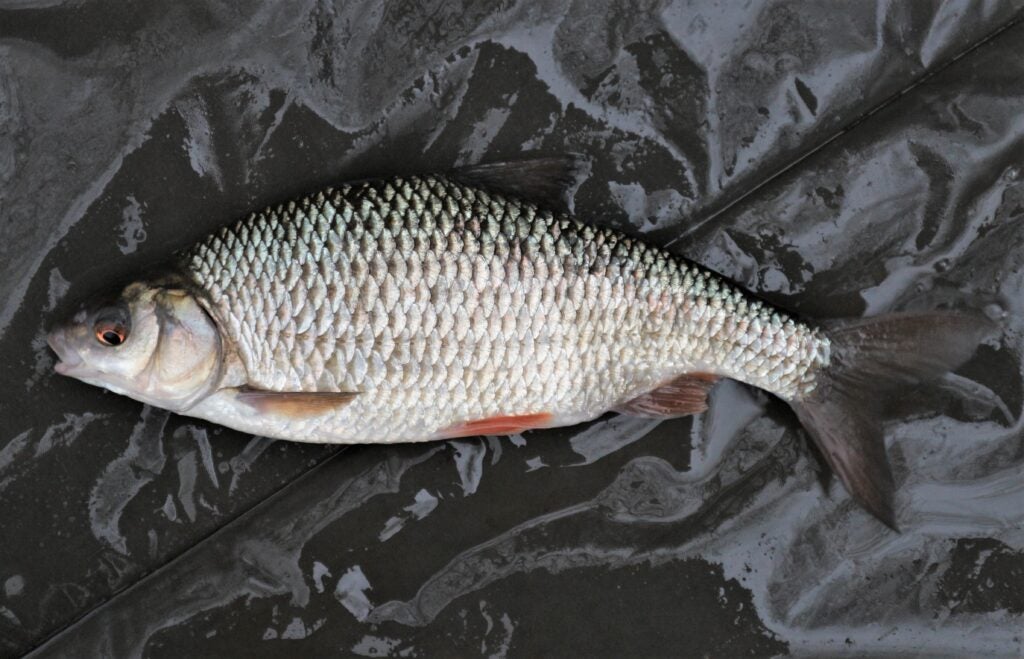
It was turning into a productive month fish-wise, but frustrating, only getting the odd glimpse of bigger roach like this one. Too many “bits” have been turning up this year, good for the future but making things tricky. Over past winters the smaller silvers have tended to switch off when it gets cold, providing better chances of finding the bigger red fins. But this time round, when the small stuff has shut up shop, so have the bigger ones. I think some of this is down to the unsettled weather. I’ve noticed in the past that long cold periods can put small fish off feeding and let the bigger ones get a chance of finding your bait. This year it has been cold for a few days, then windy and milder, then cold again, following through with that pattern most of February. I’m not complaining because I always enjoy catching lots, but it would be nice to string a few of the jumbo roach together, before they do their usual disappearing act.
EXPERIMENTING FURTHER
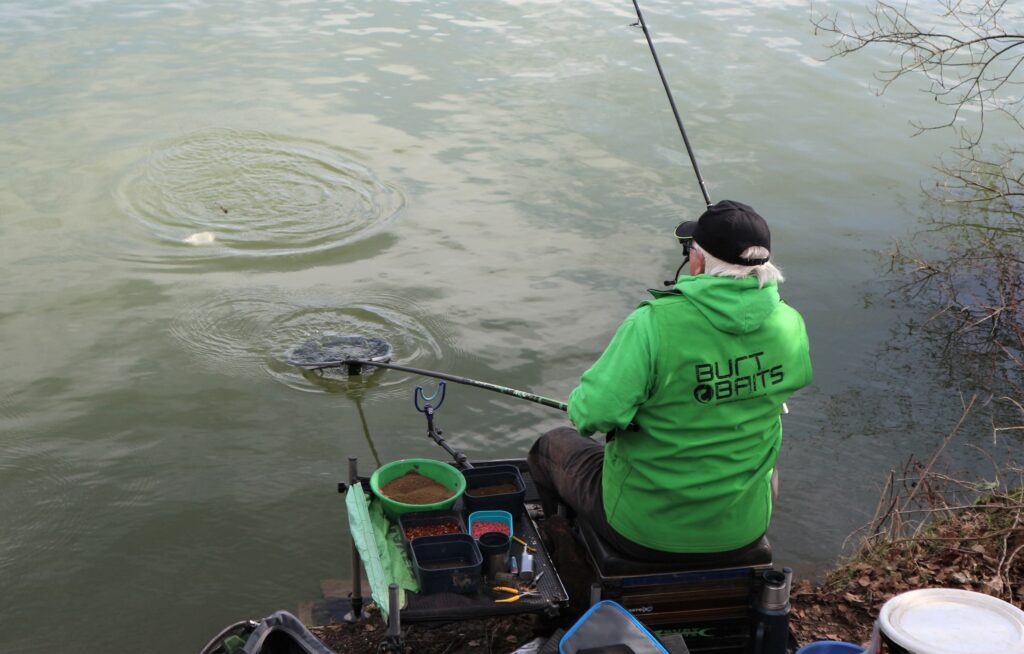
My mate Andy from London joined me on the Specimen Lake and we tried a little experiment. He fished feeder tackle with groundbait, while I stayed with the all-maggot blockend approach in the next peg. We fished the same distance out, into approximately 14 feet of water. It was the usual slow start but after an hour we began to get a few indications. It was blowing a gale again, but at least it wasn’t too cold and was nicely overcast. All Andy fed was dark groundbait with crushed expanders, adding a few casters and using red maggot on the hook. I stuck with my helicopter set-up, although I did spice my red maggots up this time with a mix of madras and turmeric powder. I started to catch roach up to 12oz and odd perch, while Andy was connecting with some decent skimmers. It wasn’t easy but gradually things improved, having to wait less long for bites. The perch were like footballs, obviously getting ready to spawn.
DIFFERENT WORLDS
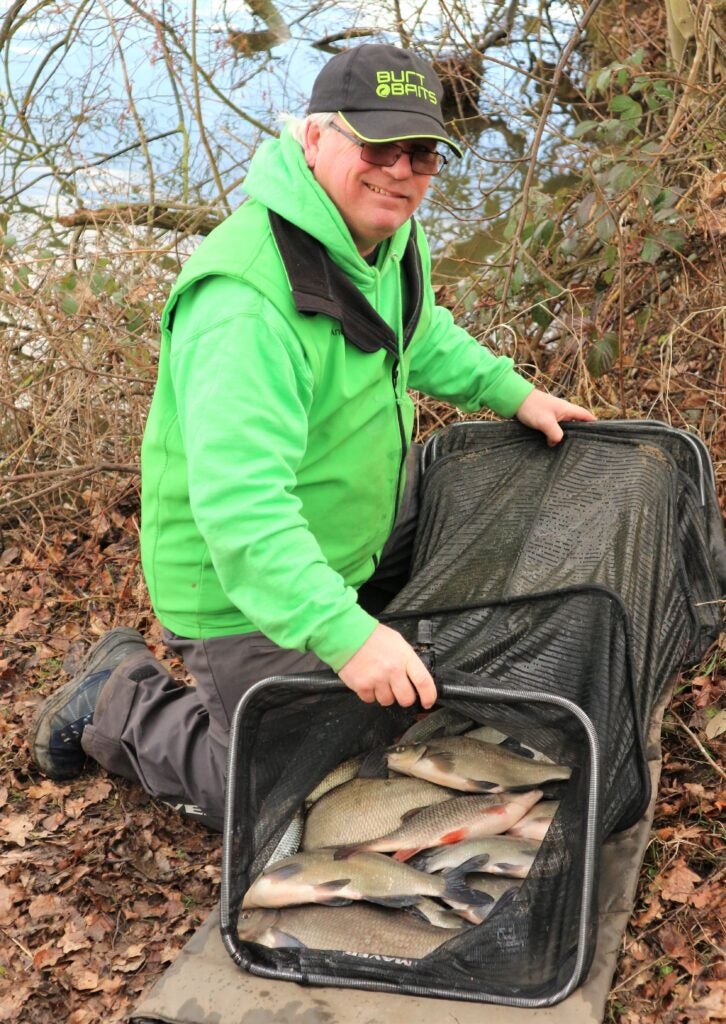
I often wonder if I should use groundbait or not during a lot of winter sessions, never quite sure if it is attracting the species I want. On this occasion is certainly proved that the quality skimmers wanted groundbait when Andy lifted out over 30lbs of them. I had around half that weight, but most of that was made up with roach and perch, only adding a couple of bonus skimmers. My best roach was around the pound mark and one perch was quite a bit bigger than that. It was noticeable that the groundbait attack only produced a solitary net roach, so that species appeared to prefer neat bait. I noticed a similar pattern with other anglers on the water catching lots more skimmers with groundbait feeder tactics, only finding stray roach, while I had been bagging up with plenty of them with a maggot only approach. I have also tried neat chopped worm in maggot feeders, expecting loads of interest, but it turned out painfully slow.
CANAL HAVEN
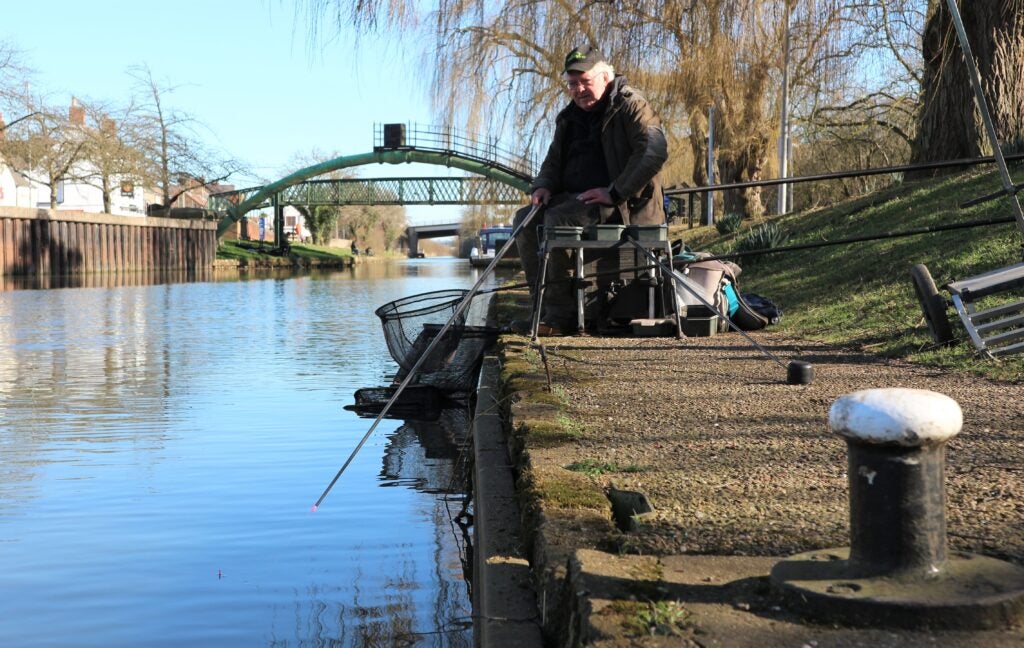
Trying something different with rivers in flood, a pal suggested the Fossdyke Canal outside Lincoln. The match stretches have been poor this winter and surface weed was a big problem before that, but the fish had to still be in there. We tried a wider built-up section, which is more sheltered than most. There were already quite a few anglers about, so it looked promising. The water was nicely coloured, prompting me to fish just off the end of my keepnet, a couple of feet out from the bank. This is a well-known tactic for the Fossdyke perch, which tend to hang around the metal pilings, or tins as locals call them. I had 3ft of depth very close in, cupping in a mixture of chopped worms and casters. I also had a throwaway long pole feed line, not sure if I would need it because it was a bite every put in fishing short. Segments of worm hardly got a chance to settle before hungry perch were on them like a pack of wolves. They were good sized fish too.
SPECIAL PLACE
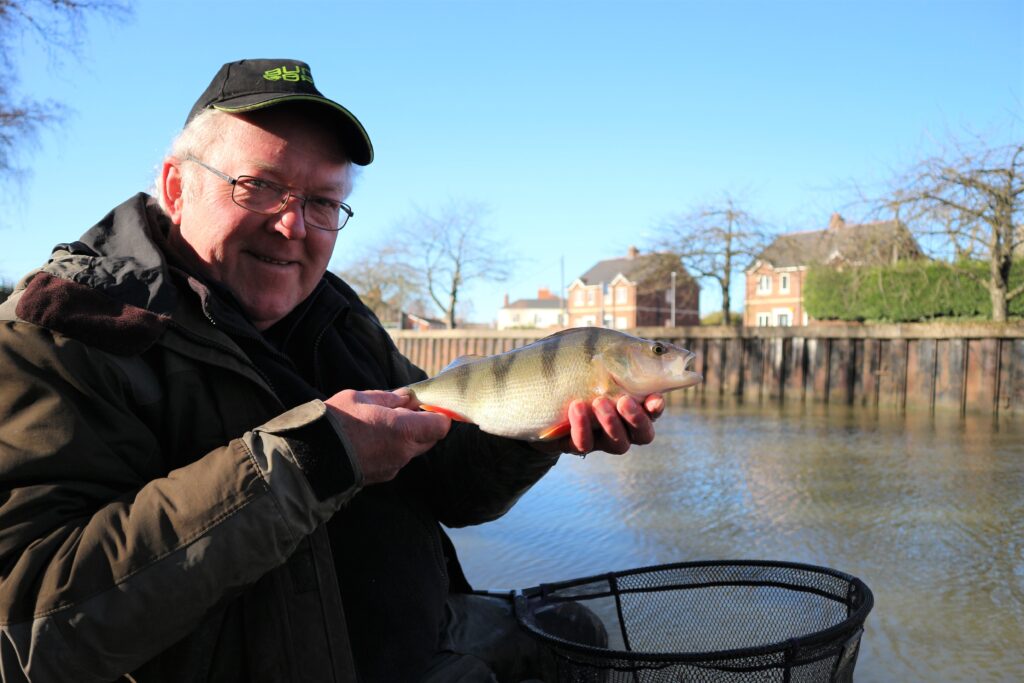
The Fossdyke is the oldest canal in the country, dating back to Roman times. It’s 11 miles long and connected to the rivers Trent, Till and Witham, which adds to the mystery factor regarding what might turn up. There was certainly plenty happening for me, netting perch after sizeable perch. I switched to using casters on the hook and this made it take a little longer to get bites, but the resulting fish were much bigger. My mate caught a two pounder and an angler down by a nearby footbridge had one of 2lb 12oz. Even bigger specimens to 3lbs plus have been weighed in matches and lure anglers catch them to over four pounds from this amazing waterway. I was happy with what I was getting, but didn’t forget to keep a few casters going out on my throwaway long pole feed line, where earlier I had cupped in three balls of groundbait. I wasn’t sure if I would ever get to that, but old match habits told me to keep it primed, just in case.
IN RESERVE
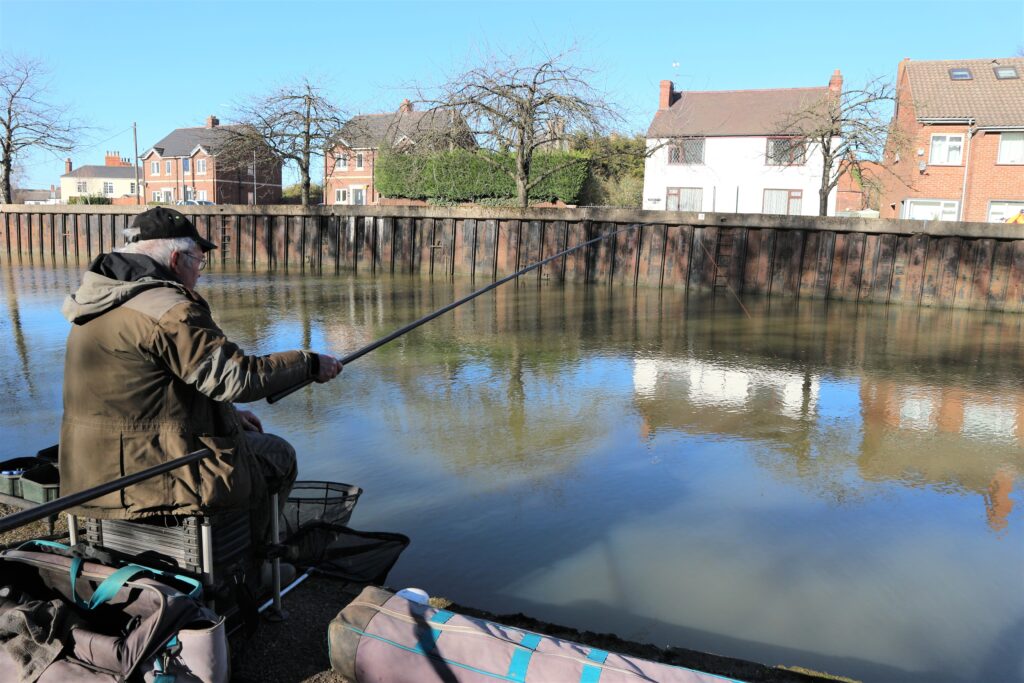
I enjoyed several hours bagging up with the perch, but didn’t forget that throwaway part of the swim, which I had been dinking casters over the whole session. There had been a couple of passing boats, but nothing to badly disturb it. I had also noticed a few little clusters of bubbles out there a few times when the wind dropped. I shipped my long pole over the spot with a single caster and my float buried almost straight away. Another good perch resulted, but next time I went out and the float slid under again, a much heavier weight was attached. That turned out to be a proper bronze bream. It’s amazing how many times having a second feed line like this has worked for me, particularly on canals. I did it all the time on the River Lee Navigation down at Stonebridge and Tottenham Locks, when there used to be lots of regular matches. Many were won in the last hour as the quality fish got themselves into a feeding frenzy.
DOUBLING UP
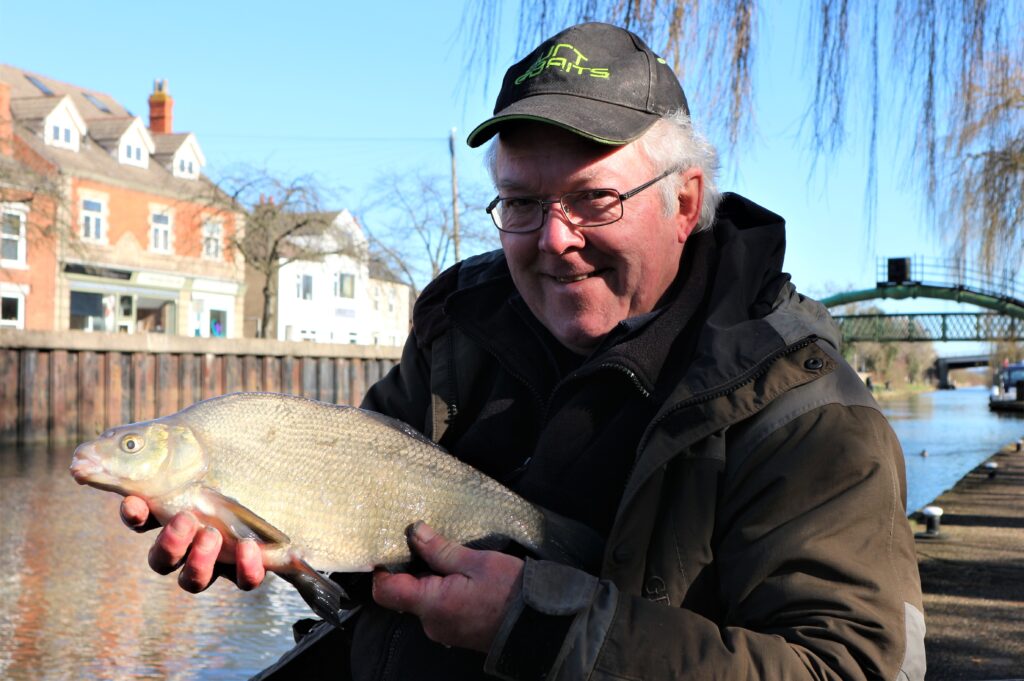
A string of bream nearly doubled my haul during the last knockings, finishing off a great day. These bonus fish might have been missed altogether by going out too early where they are most likely to show. It was the same with the River Lea chub. Hit them too quick and you got a couple, then the rest of the shoal faded away. But feed them for several hours, leaving the shoal well alone and very often you could bag up big time when eventually a baited hook went amongst them. The Fossdyke bream can be frustratingly elusive at times, but occasionally they will switch on in a previously fed but left alone area. Fish up to four pounds turned up in a very short time. I think I might have foul hooked one that came off, and then small roach moved in. Location is key on this canal. On many stretches different species come and go, migrating quite big distances I suspect. I certainly found the perch and bream during the final days of February.

